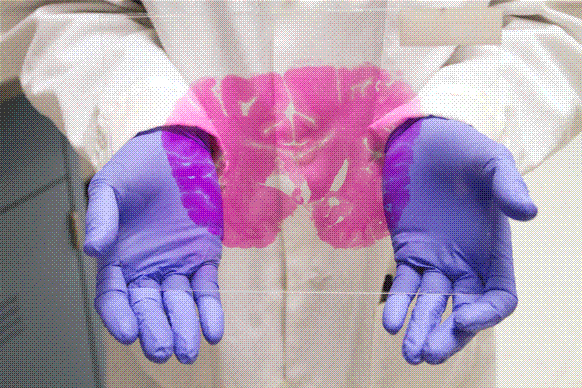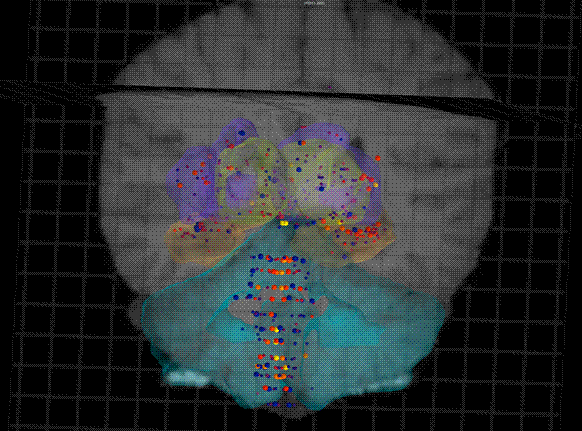A Detailed Gene Map of the Human Brain
Scientists have mapped the biochemistry and anatomy of two human brains in comprehensive detail, compiling the data into a publicly accessible database called the Allen Human Brain Atlas. In addition to maps highlighting where in the brain each gene in the genome is expressed, the atlas includes brain imaging data derived from magnetic resonance imaging (MRI) and diffusion tensor imaging (DTI).

According to a release from the institute, the data “reveal a striking 94 percent similarity between human brains”. In addition, “data analysis from the two human brains indicate that at least 82 percent of all human genes are expressed in the brain, highlighting its tremendous complexity while also providing an essential genetic blueprint to understand brain functionality better and propel research in neurologic disease and other brain disorders.”

The human map follows release of a mouse version that the institute released in 2006. The human data will likely be used in studies examining a broad range of neurological disorders and cognitive functions, such as Parkinson’s disease, schizophrenia, multiple sclerosis and even obesity. According to the institute, about 4,000 unique visitors are accessing the new Atlas each month.

“Until now, a definitive map of the human brain, at this level of detail, simply hasn’t existed,” said Allan Jones, Ph.D., Chief Executive Officer of the Allen Institute for Brain Science. “The Allen Human Brain Atlas provides never-before-seen views into our most complex and most important organ. Understanding how our genes are used in our brains will help scientists and the medical community better understand and discover new treatments for the full spectrum of brain diseases and disorders, from mental illness and drug addiction, to Alzheimer’s and Parkinson’s diseases, multiple sclerosis, autism and more.”
Similar to a high-powered, multi-functional GPS navigation system, the Allen Human Brain Atlas identifies 1,000 anatomical sites in the human brain, backed by more than 100 million data points that indicate the particular gene expression and underlying biochemistry of each site. Scientists can use the Allen Human Brain Atlas to explore the human brain and identify how disease and trauma, including physical brain injuries and mental health disorders, affect specific areas of the brain. This powerful resource makes it possible to pinpoint where a particular drug acts anatomically in the brain, to ultimately better control the successful outcome of numerous therapies.
It is anticipated that the Allen Human Brain Atlas will be used in small and large-scale applications to examine diseases and disorders, such as obesity, Parkinson’s disease, autism, schizophrenia, Alzheimer’s disease and multiple sclerosis — as well as those exploring how the healthy brain works.
Keep Reading
Most Popular
Large language models can do jaw-dropping things. But nobody knows exactly why.
And that's a problem. Figuring it out is one of the biggest scientific puzzles of our time and a crucial step towards controlling more powerful future models.
The problem with plug-in hybrids? Their drivers.
Plug-in hybrids are often sold as a transition to EVs, but new data from Europe shows we’re still underestimating the emissions they produce.
Google DeepMind’s new generative model makes Super Mario–like games from scratch
Genie learns how to control games by watching hours and hours of video. It could help train next-gen robots too.
How scientists traced a mysterious covid case back to six toilets
When wastewater surveillance turns into a hunt for a single infected individual, the ethics get tricky.
Stay connected
Get the latest updates from
MIT Technology Review
Discover special offers, top stories, upcoming events, and more.